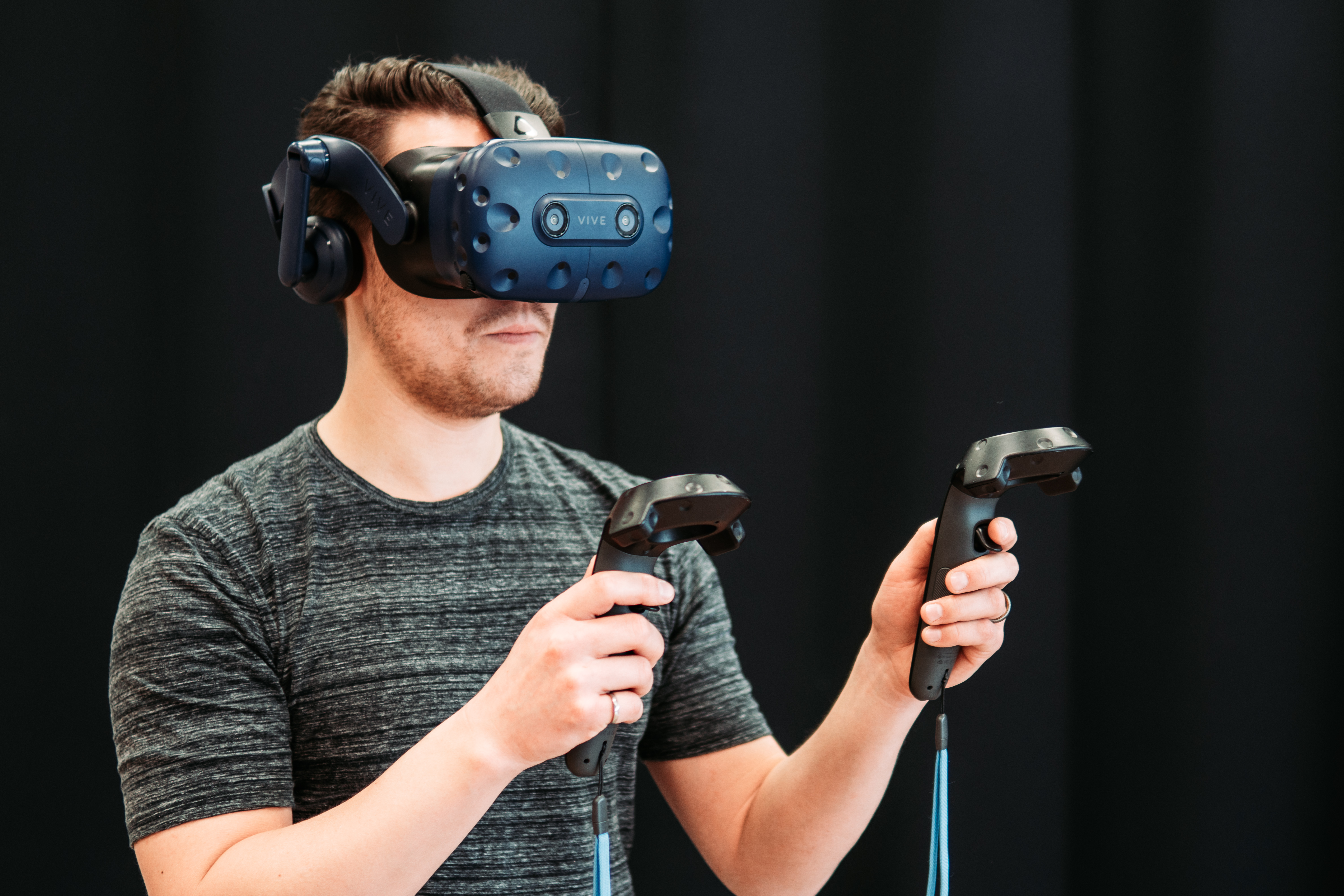
Faculty of Rehabilitation Medicine postdoctoral fellow Nathanial Maeda demonstrates the virtual reality system that hosts the OSCE exam practice program. (Photo: Tyler Ferguson)
Occupational therapy students preparing for their clinical exams are feeling a little less anxious thanks to new virtual reality programming at the University of Alberta's Rehabilitation Robotics Lab.
The Objective Structured Clinical Exam (OSCE) Virtual Reality Program, created by Faculty of Rehabilitation Medicine MSc in Rehabilitation Science student Brendan Concannon, is allowing students to get hands-on exam practice before they complete the real thing.
"The OSCEs are novel experiences for students in health sciences programs," says Concannon, whose project was supervised by Department of Occupational Therapy's Shaniff Esmail and Mary Roduta Roberts. "They feature assessment stations where students demonstrate their clinical skills, providing consultations to mock patients."
During a typical OSCE, students taking the exams enter a clinical room with a standardized patient, an actor who is trained to represent a person with a complex array of health characteristics.
"The student acts as a therapist providing a consultation to the patient, focusing on a holistic approach and completing a thorough investigation of the patient's health."
Assessing patients, standardized or not, can be nerve-wracking, with students expressing stress and anxiety during preparation.
But with the help of a realistic, virtual space, students are able to gain some peace of mind by practicing different scenarios with a pre-programmed avatar.
"Our project data has shown significant results, with a notable difference in anxiety levels between those who practiced with the VR system and those who did not," says Concannon.
The electronic, immersive environment replicates the actual assessment rooms used during the exam, complete with an artificially intelligent examiner and patient, whose movements mimic those of real-life patients.
"The OSCE VR Program uses virtual reality technology to generate an authentic simulation of the OSCE for students to train and get a feel for what the actual exam is like in a safe space," says Nathanial Maeda, a postdoctoral fellow in the Faculty of Rehabilitation Medicine who assisted with the project in the Rehabilitation Robotics Lab. "The goal is for exam anxiety to be reduced so students can be more successful."
Although occupational therapy students are the main users of the program, Concannon believes it could be implemented across campus.
"Programming such as this would have promising transferability to other programs that require practical examinations or interviews, such as performance arts, media studies and business, to name a few."
But before there can be more wide-spread application, Maeda says that they hope to improve the program over time so students can get the most out of their studying.
"We plan to enhance the artificial intelligence component using real OSCE data, add more patient scenarios and implement a real-time feedback component. This will hopefully give students an even more realistic experience."